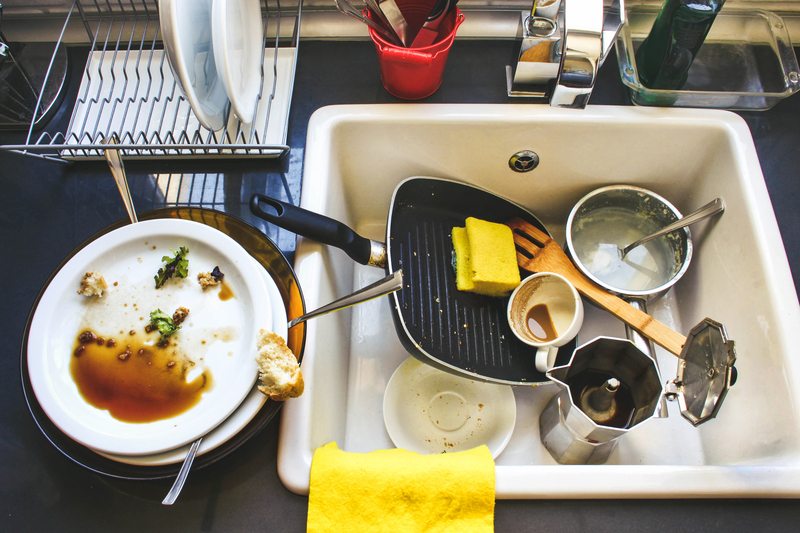Create a Calm Transition With These Moving House Tips
Moving can be one of life's most stressful events, but it doesn't have to be. With the right preparation, mindset, and strategies, you can make moving house a peaceful experience. In this comprehensive guide, we'll explore expert tips and moving hacks that help you create a calm transition when moving house. From early planning to settling into your new home, let's ensure your next move is organized, stress-free, and even enjoyable!

Why Is Moving So Stressful?
Before diving into the top moving house tips, it's important to understand why moving is often overwhelming. Moving disrupts your routine, brings uncertainty, and forces you to make countless decisions. Packing, paperwork, address changes, and farewells all add to the emotional and physical load. But with careful planning, you can turn chaos into calm during this huge life change.
Pre-Move Organization: Laying the Foundation for a Calm Transition
1. Start Early: The Key to a Stress-Free Move
- Create a moving house checklist at least two months before your move. Break it down by weeks and tasks.
- Book your removal company as early as possible (especially during busy times like summer and month-ends).
- Request time off work if needed to give yourself breathing space.
Why it Helps: Early planning helps you avoid last-minute panics and gives you time to handle unexpected setbacks calmly.
2. Declutter Ruthlessly
- Go room by room and sort every item into 'Keep', 'Donate', 'Sell', or 'Dispose'.
- Host a garage sale or list items on community selling sites.
- Dispose of anything broken, unwanted, or unused--less to pack means less stress!
Decluttering before packing is the most effective way to create a calm transition to your new home. You'll save money on removals and start afresh, surrounded only by things you love.
3. Gather Essential Moving Supplies
- Order sturdy moving boxes in various sizes, as well as packing tape, bubble wrap, and markers.
- Use color-coded labels for each room to make unpacking easier.
- Set aside a bag or box for day-one essentials (toiletries, chargers, important documents, basic kitchenware).
Tip: Using recycled boxes helps the environment and can cut costs.
4. Notify Providers and Change Your Address
- Inform utility companies, banks, schools, insurers, and subscription services about your new address.
- Arrange mail forwarding with your local postal service.
- Don't forget to register with a new doctor or dentist if you're moving location.
Proactive communication means nothing gets missed, and you'll settle in more quickly.
Packing Like a Pro: Calm, Careful, and Methodical
5. Pack Non-Essential Items First
- Start with items you don't use daily - off-season clothes, books, decorative pieces, spare linens.
- Gradually progress to the kitchen, bathroom, and bedrooms over the weeks leading up to moving day.
Avoid packing everything at once. A step-by-step approach helps you stay organized and minimizes disruption to daily life.
6. Master the Art of Labeling
- Label every box clearly on the top and sides with its contents and destination room (e.g., "Kitchen: Cutlery, Toaster").
- Use colored labels or tape for each room to make handling easier for movers--and for yourself when unpacking.
- Number boxes and keep an inventory list for extra peace of mind.
7. Protect Your Valuables
- Keep important documents, jewelry, and sentimental items in a personal bag that stays with you.
- Take photographs of high-value or fragile items for insurance purposes.
- Use plenty of padding when packing breakables, and clearly mark boxes as "FRAGILE."
8. Ask for Help and Delegate
- Enlist help from friends and family for packing, cleaning, or childcare.
- Don't hesitate to hire professional packers, especially if you're short on time or energy.
- Delegation is not a weakness--it's a wise way to reduce moving stress and create a peaceful transition.
Moving Day: Stay Calm Amid the Chaos
9. Double-Check Everything
- Walk through each room with your checklist to ensure nothing is left behind--including lofts, garages, and sheds.
- Confirm arrangements with your moving company and provide them with your contact details and new address.
10. Keep Essentials Close
- Your "essentials box" should include snacks, water, chargers, toiletries, cleaning wipes, first aid, and bedding.
- Carry it with you rather than packing it on the moving truck.
11. Take Care of Yourself
- Eat well, remain hydrated, and take regular breaks. Moving day can be physically demanding!
- Practice deep breathing, and try to view hiccups as learning opportunities rather than disasters.
- Keeping a calm mindset will help everyone around you feel more relaxed.
Don't forget--moving is a marathon, not a sprint!
Settling In: Make Your New House Feel Like Home
12. Prioritize Unpacking
- Start with the kitchen and bedrooms for immediate comfort.
- Unpack essentials first, then move room by room according to your labeled boxes.
- Give yourself permission to unpack gradually--perfection isn't required on day one!
13. Reconnect With Routine
- Set up familiar items and daily essentials to help every family member adjust.
- Maintain regular meal times, bedtimes, and hobbies to reinforce a sense of normality.
Routine is a powerful way to create a calm transition after moving home.
14. Meet Your New Neighbors
- Introduce yourself with a smile or homemade treat.
- Get recommendations for local services, shops, and schools.
- Join local online community groups to feel connected.
A warm welcome makes a huge difference when settling in.
15. Celebrate Your New Beginning
- Order your favorite takeout food and have a relaxed family meal amidst the boxes.
- Take a walk and explore your new neighborhood to start making memories.
- Mark the occasion--even a simple toast can help everyone feel optimistic about the future.
Eco-Friendly Moving Tips for an Even Calmer Transition
- Use recyclable packing materials and avoid single-use plastics where possible.
- Donate unwanted items to charity shops to reduce waste.
- Return used boxes to friends or moving companies for reuse.
- Dispose of hazardous materials responsibly and use eco-friendly cleaning products in your old and new homes.
Moving sustainably brings peace of mind--and helps your new home get off to a positive start.
Moving With Kids or Pets? Here's How to Make It Smoother
For Children:
- Discuss the move together and answer questions honestly.
- Let children help with packing and decorating their new rooms.
- Keep favorite toys, snacks, and familiar bedding handy to ease anxiety.
- Visit the new neighborhood ahead of time if possible to introduce them to play parks and schools.
For Pets:
- Prepare a safe, quiet space (with favorite toys and bedding) in both homes during the move.
- Keep routines as consistent as possible and update your pet's microchip/address details.
- Give time for pets to explore at their own pace, rewarding calm behavior with treats.
Bonus Tips: How to Stay Calm When Moving House
- Practice mindfulness--a few minutes of calm breathing can work wonders during high-stress moments.
- Prioritize sleep in the run-up to moving day to reduce irritability and mental fatigue.
- Delegate! You don't need to do everything alone. Ask friends or hire services for packing, cleaning, and heavy lifting.
- Maintain perspective. Moving is temporary, and soon you'll be enjoying your fresh start.
- Stay flexible--no move unfolds exactly as planned, but a positive mindset can turn setbacks into stories.

Frequently Asked Questions About Creating a Calm Move
What is the best moving house checklist to reduce stress?
The best moving house checklist is one that's tailored to your unique situation, broken down by weeks, and includes decluttering, packing, address changes, and key dates for services and children's schooling. Many free printable checklists are available online to customize.
How can I help my family cope with moving anxiety?
Talk openly about the move and the feelings that come with it. Involve your family in planning and decision-making, keep routines consistent, and highlight the exciting opportunities in your new community.
What are common mistakes that add to moving stress?
- Packing at the last minute
- Forgetting to update your address with key providers
- Neglecting to arrange childcare or pet care on moving day
- Underestimating how long the process will take
- Trying to do it all alone rather than asking for help
Conclusion: Your Calm House Move Starts Here
While moving house can be daunting, these moving house tips for a calm transition will empower you to take control and make your next move a serene, organized experience. Remember: start early, declutter, involve your family, and focus on self-care. With each box you pack and tick off your checklist, you're one step closer to turning your new house into a welcoming, peaceful home.
Ready for your calmest move ever? Just use these tried-and-tested strategies to create a smooth, calm transition--and before you know it, you'll be starting an exciting new chapter stress-free!



